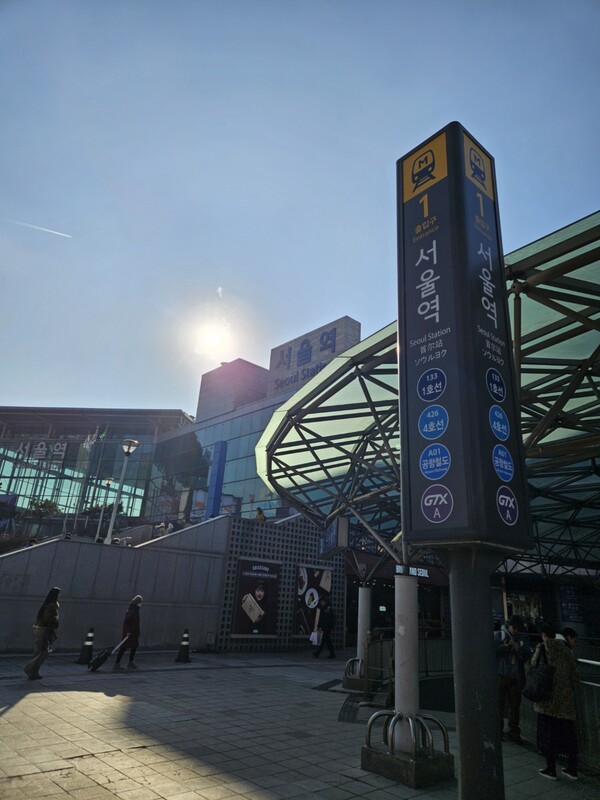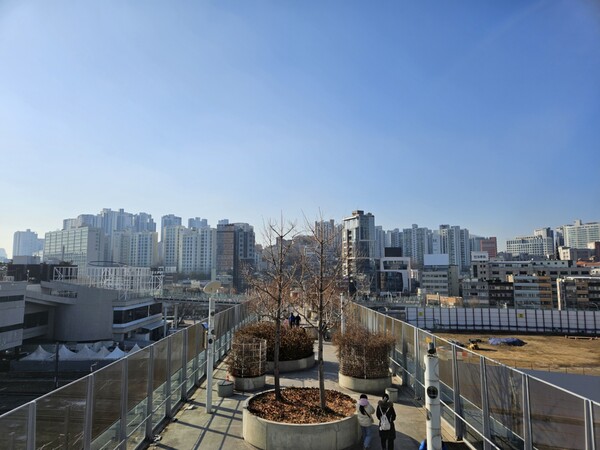Students visiting Dongguk University as exchange students or international students may often stay in university dormitories or live nearby. Seoul, the capital city of South Korea is a place where historical landmarks, modern city life, and nature coexist harmoniously. Even without a car, you can travel around Seoul at relatively low costs using public transportation such as subway or bus. For students, Seoul will always be an interesting place during your stay in Korea. Through this article, The Dongguk Post would like to introduce major subway stations in Seoul and the tourist attractions nearby, hoping it will be helpful and enjoyable life in Korea.

Seoul Station
If you arrived at Incheon International Airport and took the Airport Railroad to Dongguk University, you likely passed through Seoul Station. In addition, if you plan to travel to places like Busan, Jeonju, or Gangneung by train, Seoul Station is a common starting point. Seoul Station connects multiple lines including Line 1, Line 4, the Airport Railroad, KTX, GTX-A, and the Gyeongui-Jungang Line, making it a huge transportation hub. The station itself is large and historically significant, with museums related to the station’s history. It is also featured in the Korean zombie movie “Train to Busan” as the departure point for the journey to Busan.
Tourists Attractions

- Culture Station Seoul 284
Culture Station Seoul 284 is a historic building constructed during the Japanese colonial period, which has been repurposed as a cultural complex. It offers a glimpse of modern Seoul architecture during the colonial era. Today, it serves as a venue for performances, exhibitions, seminars, and meetings, with free admission for visitors. For individual events, they may have separate fees. The venue is accessible via Exit 2 of Line 1 or Line 4.

- Seoullo 7017
Seoullo 7017 is an elevated pedestrian walkway created by transforming an old overpass from the 1970s. Originally slated for demolition due to safety concerns, it was repurposed into a pedestrian path with 17 pathways, blending greenery and urban elements, acting as both a plant sanctuary and a one-kilometer urban viewpoint. From here, you can enjoy views of both nature and the city. If walking by stairs is difficult, accessible elevators are available through Exit 2 of Seoul Station and Exit 4 of Hoehyeon Station.

- Namdaemun Market
Among Seoul’s many traditional markets, Namdaemun Market located near Seoul Station is one of the most famous. It was established in 1414 during the Joseon Dynasty, it has endured numerous challenges, including fires throughout history, but continues to provide a wide variety of goods and experiences. You can reach it by walking towards Hoehyeon Station via Seoullo 7017, or by 20-minutes walk from Seoul Station, where you can explore everything from street food to souvenirs. The market also offers a historical experience, showcasing the history of Namdaemun Market and leading to Sungnyemun Gate, allowing visitors to momentarily step into the Joseon Dynasty.
Seoul Station and its surrounding tourist attractions provide a rich experience of history, culture, and modernity. For international students, it will surely be an enjoyable place to explore during your stay in Korea.
Cautions
While walking through Line 1 at Seoul Station, you may encounter many homeless individuals. This is due to a free meal service available nearby. As long as you stay calm, there is no need to worry and you may proceed to your destination without any issue.
Seoul Station is large, with multiple exits and platforms, making it easy to get confused. However, by following the signs indicating the colors of the lines, destination of the trip, and exit numbers, you will be able to find your way without much trouble.
Subway Travel Tips
• Navigation Apps: Using Naver Maps or KakaoMap while traveling in Seoul, especially in Korea, will make your journey more convenient
• Climate Card: For cheaper travel around Seoul, use the Climate Card, available for purchase at subway stations. Make sure to check the routes carefully because it does not work out of Seoul
• Using the Ticket Gate: To enter through the ticket gate, place your card on the right side of the reader
• Gate Issues: If there is an issue with the gate, you can press the button next to the gate at the end to ask a staff member for assistance. Speak calmly, then they will help you resolve the issue
• Line Colors and Direction: Pay attention to the line colors and directions (terminus stations or the next stations) to make your journey easier
• Transfer: If you are on the same line, exiting the station and re-entering within 15 minutes allows you to transfer for free
• Lost Items: If you lose something on the subway, you can contact the lost and found center to recover your belongings or visit the information center in the station for help
• Clean Restrooms: Subway restrooms in Korea are generally clean and can be useful in emergencies

